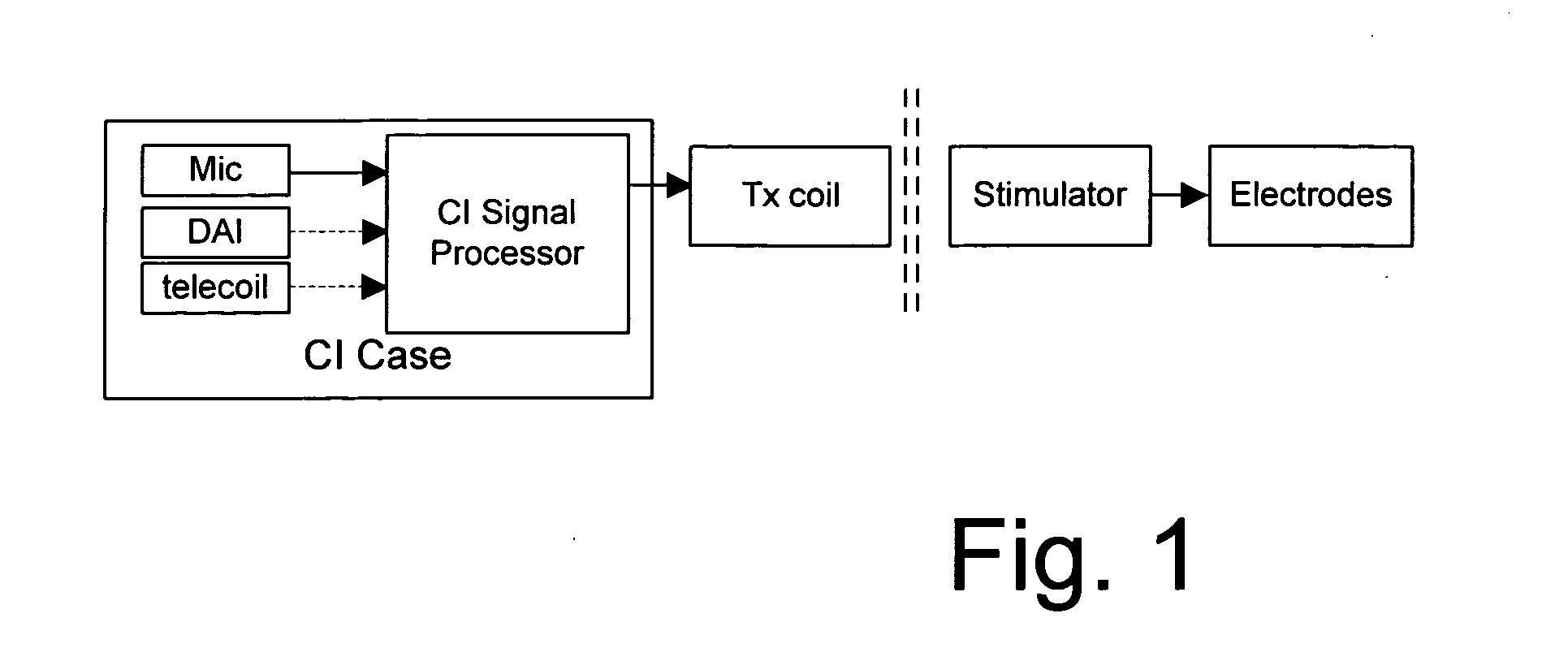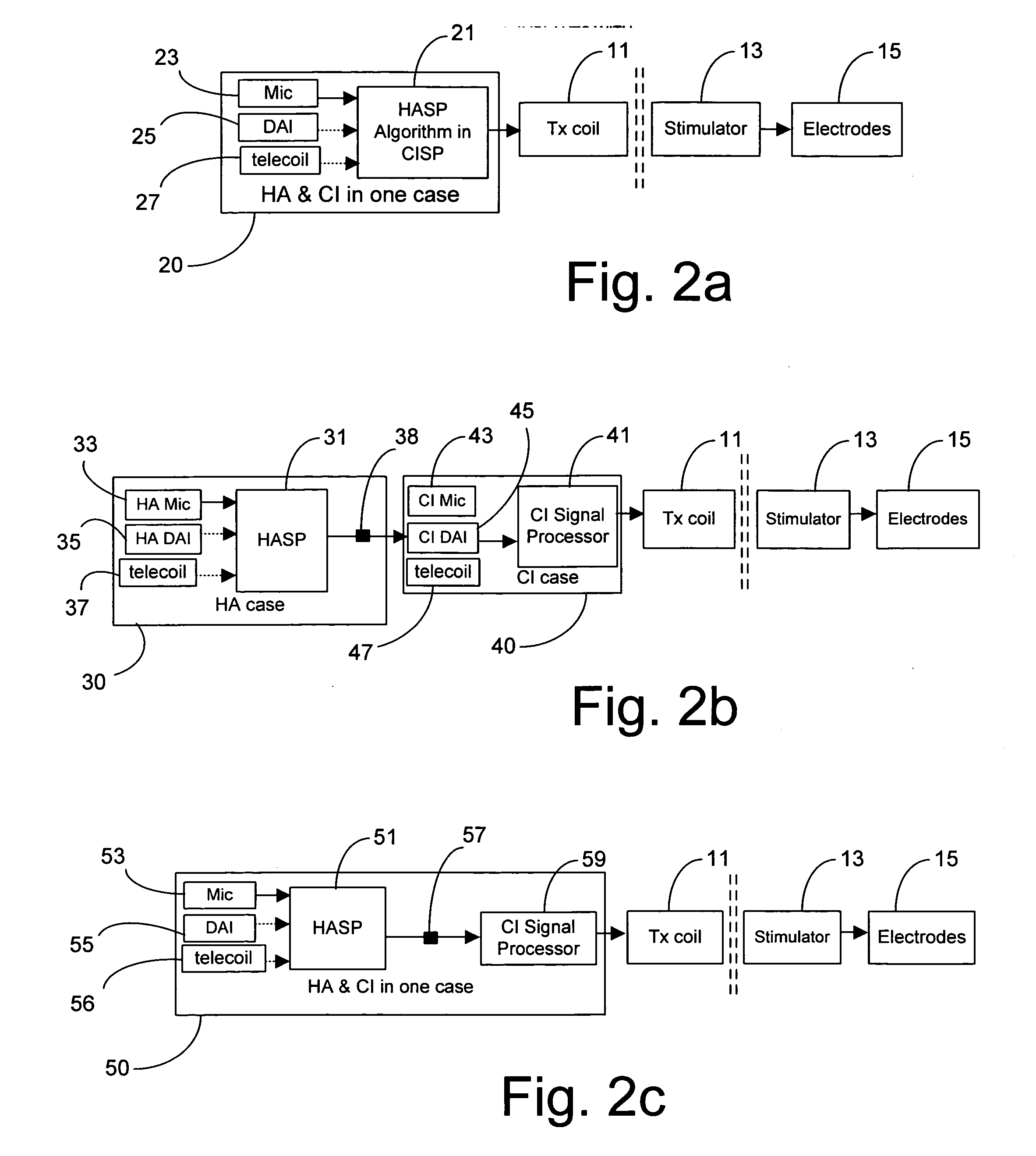Enhancing cochlear implants with hearing aid signal processing technologies
- Summary
- Abstract
- Description
- Claims
- Application Information
AI Technical Summary
Benefits of technology
Problems solved by technology
Method used
Image
Examples
Embodiment Construction
[0040] Aspects of the present invention relate generally to the field of cochlear implant design, and more particularly to the improvement of cochlear implant speech processing for enhancing speech understanding, listening comfort, perceived sound quality and convenience of cochlear implant usage.
[0041] In an embodiment of the present invention, a cochlear implant module containing a signal processor may be enhanced using a front-end processor. The front-end processor may be a signal processor such as, for example, a hearing aid signal processor or a hearing protector signal processor. The front-end processor may enhance the performance of the cochlear implant by adding such capabilities as, for example, directional microphones, adaptive directionality algorithms, noise reduction algorithms, switchless telecoils, wireless programming capabilities, etc.
[0042] In an embodiment of the present invention, the connections to and from the front-end signal processor and the cochlear impla...
PUM
 Login to View More
Login to View More Abstract
Description
Claims
Application Information
 Login to View More
Login to View More - R&D
- Intellectual Property
- Life Sciences
- Materials
- Tech Scout
- Unparalleled Data Quality
- Higher Quality Content
- 60% Fewer Hallucinations
Browse by: Latest US Patents, China's latest patents, Technical Efficacy Thesaurus, Application Domain, Technology Topic, Popular Technical Reports.
© 2025 PatSnap. All rights reserved.Legal|Privacy policy|Modern Slavery Act Transparency Statement|Sitemap|About US| Contact US: help@patsnap.com



